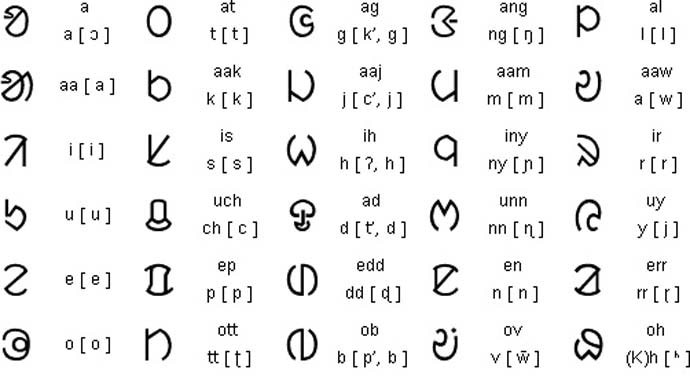How conserving tribal languages will preserve dying cultures
In a culturally and linguistically diverse country like India, there is a need to conserve the tribal languages that are dying.
One of the most complex problems in India is the problem of languages. India has seen many movements to conserve the native languages; even demanding separate statehood on linguistic grounds. Some of them were successful and states like Andhra Pradesh, Gujarat and Maharashtra are the results of those movements. These states have their native language spoken by the majority of people as their official language.
However, there are many languages in our country spoken by a good many people that still do not have the official status. Even their speakers are reluctant to demand it, primarily due to the lack of awareness and organisation. Tribal languages of India are good examples of such languages that are spoken by many and the need to conserve them. While many tribal languages are enjoying official status in the north-eastern states, the ones in ‘mainland’ India are not.
The Santali Alphabets
According to People’s Linguistic Survey of India (2013), 480 languages are spoken by tribal people in India. While some of these are spoken by large groups of people, others barely have any takers. Bhili, for instance, is spoken by 2.1 crore people in western India and Santali is spoken by 48 lakh people in the eastern part of the country. Both of these are tribal languages. However, while the former does not have any official status, the latter is the official language in Jharkhand.
One may ask what is the need to conserve these tribal languages. The primary need to conserve any language is to conserve the cultures associated with them. This includes literature, food habits and lifestyle. As Noam Chomsky put it, “A language is not just words. It’s a culture, a tradition, a unification of a community.” When a language disappears, the culture associated along with it also dies.
The second reason to conserve tribal languages is to ensure literacy and education of tribal people. A Bhili child living in Gujarat’s Dang district will have to study in either Gujarati or English mediums because his/her mother tongue does not have the official status. Considering the difficulties in studying in a language that is not one’s mother tongue, there is a rise in the number of dropouts or those opting not to study at all.
While the national literacy rate is 73 per cent, the literacy rate of the Scheduled Tribes (STs) is just 59 per cent. In Telangana, the dropout rate for the STs is 52.57 per cent and that of other categories is just 29.42 per cent. The language factor could be one of the important reasons leading to such high dropout rates and illiteracy among tribal people. Being educated in their mother tongues will solve this problem.
The third reason is to eliminate the feeling of marginalisation and avoiding the communication gap. In areas with high insurgency, the native language is not understood by law enforcement agencies, leading to a gap in communication. The militants benefit out of this gap and the nexus of insurgency continues. To break this, in 2018, the Chhattisgarh Police mandated their personnel to learn the Gondi language. Tribal people can understand the government and law enforcement machinery better if it is available in their own language.
So how can we conserve these tribal languages? The first step is to set up committees of linguists — voluntary or government-appointed — that decide whether what is spoken is a dialect or a language, and whether manuscripts of the language are available or not. If the manuscripts of a language are not available, they can work on what manuscript can be used.
The second step is to publish dictionaries and learning material in the language. For instance, in 2018, the Odisha government published bilingual dictionaries in 21 rare tribal languages. These enable scholars and enthusiasts to not just learn those languages, but also produce great literature, in addition to conserving the existing ones.
The third step should be to allow tribal languages as a medium of communication and education in specific districts and regions. As mentioned earlier, it can reduce the communication gap, illiteracy, and the number of school dropouts.
The fourth step should be promoting tribal languages through cultural and entertainment programs. In February this year, a radio channel in Jharkhand started airing cultural programmes in Asur language, which has only 7,000 to 8,000 speakers. The Asur community started popularising the language within their geographical limits and this aided in the revival of the dying language. If organisations and collectives can make interesting dramas or films in tribal languages, they can have a wider reach and appeal with the younger crowd.
The efforts cannot stop with these steps alone. With the world moving towards the digital platform more rapidly than ever before, the literature, folklore and songs in tribal languages will also have to be digitised for the sake of posterity. With mobile internet, this step will enable these languages to transcend the geographical borders. One useful tool to achieve the same can be Wikipedia that is currently available in 28 Indian languages. Santali became first Indian tribal language to have its version on the platform.
While the government must take steps in ensuring the rightful status to tribal languages, it cannot do everything by itself. A healthy nexus and coordination between voluntary organisations, linguists, and the government is a must. India is a treasure trove of tribal languages. These need to be preserved in the interest of conserving the cultural diversity of the country.

